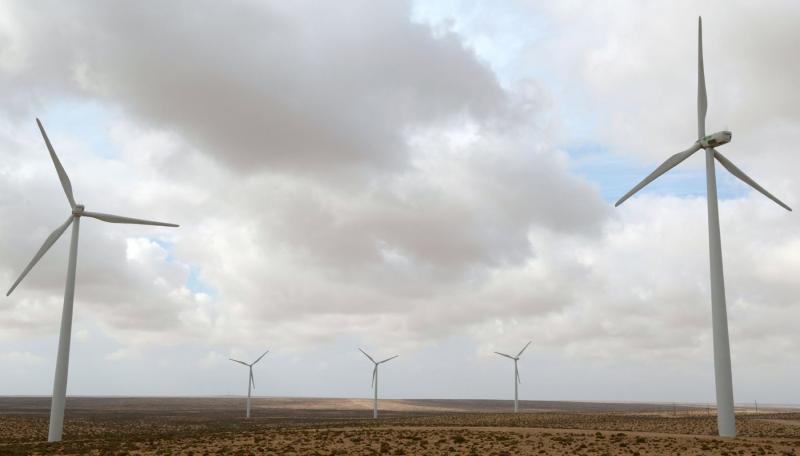The Global Wind Energy Council released data indicating an increase of 894 megawatts of wind power in the Middle East and Africa regions in 2019.

While this was a 7% decrease in growth from 2018, the Global Wind Energy Council (GWEC) Market Intelligence predicted rapid acceleration in the coming years. By 2024, GWEC said MENA will have 10.7 gigawatts (GW) of wind energy capacity, a 167% increase from now.
The quick development is expected to be spurred by installations in Morocco and Saudi Arabia, a 1.8 GW installation in Egypt and 3.3 GW worth of installations in South Africa.
In the MENA region, Egypt ranked first in wind energy capacity at 262 megawatts (MW), trailed by Morocco at 216 MW. Jordan was third, contributing 190 MW of wind power capacity.
The GWEC report stated that, within MENA, wind energy was expected to become a “key technology” that allows for cost-effective and sustainable energy, enabling countries such as Jordan to transform their energy systems and ensure that electricity is widely available. This was predicted to create skilled jobs and drive economic growth.
“Challenges such as policy and power market frameworks, transmission infrastructure bottlenecks and odd-taker risk must be overcome for Africa and the Middle East to take full advantage of their wind potential,” GWEC CEO Ben Backwell said in a statement released in February.
“This will be crucial as the region’s energy demands, GDP and population are set to grow significantly over the next decade, as wind can provide a decentralised, cheap and reliable energy source to increase electrification rates and support this growth.”
GWEC describes itself as an “international association for the wind power industry,” representing the entire wind energy sector as a global member-based organisation.
Its members represent more than 1,500 institutions, companies and organisations in more than 80 countries, as well as manufacturers, research institutes, developers, manufacturers and finance and insurance companies, who work with the United Nations Framework Convention on Climate Change, the International Renewable Energy Agency and others to advocate for better wind power policy.
The GWEC’s results were released as part of their Global Wind Report that provides an overview of changes in the global wind industry, including an update on trends such as changing business models, offshore wind growth and corporate sourcing.